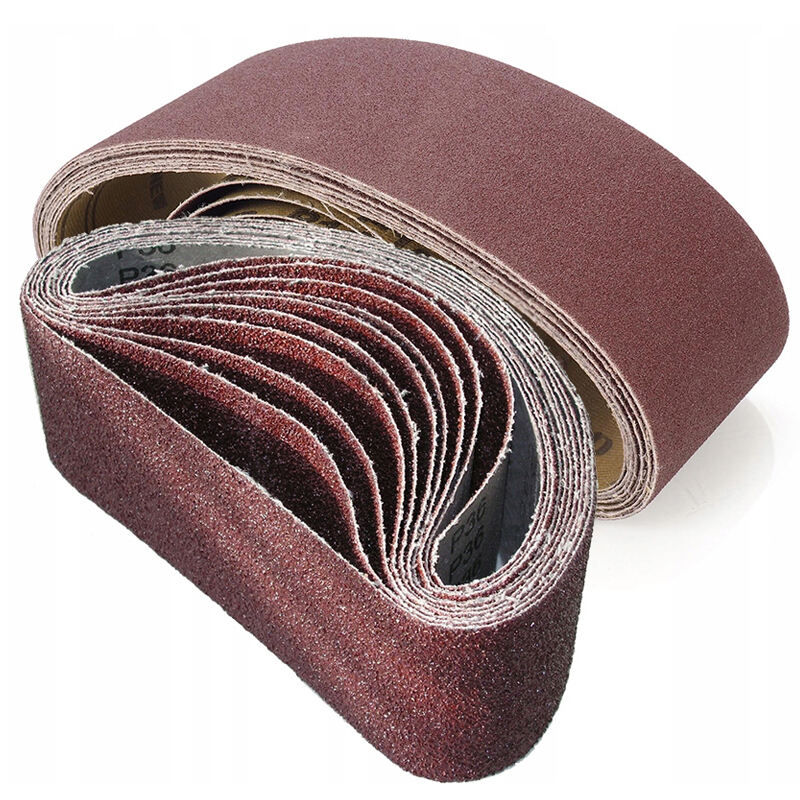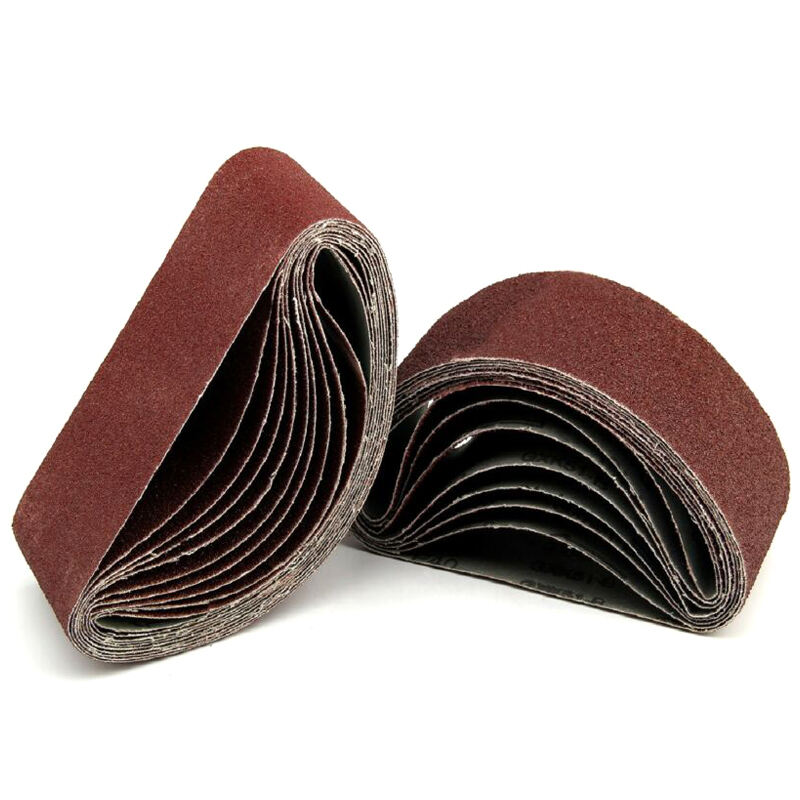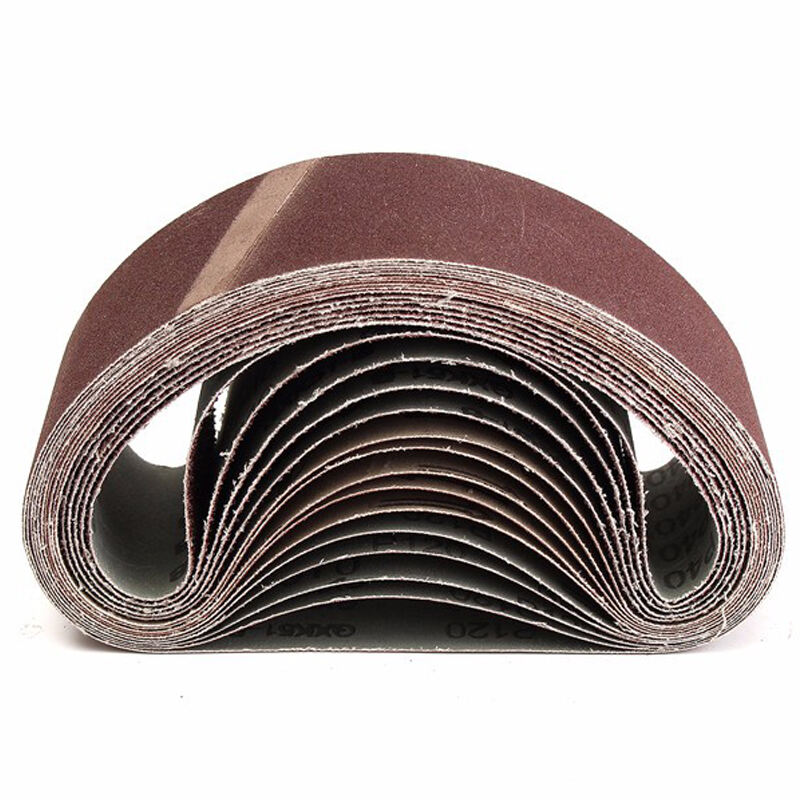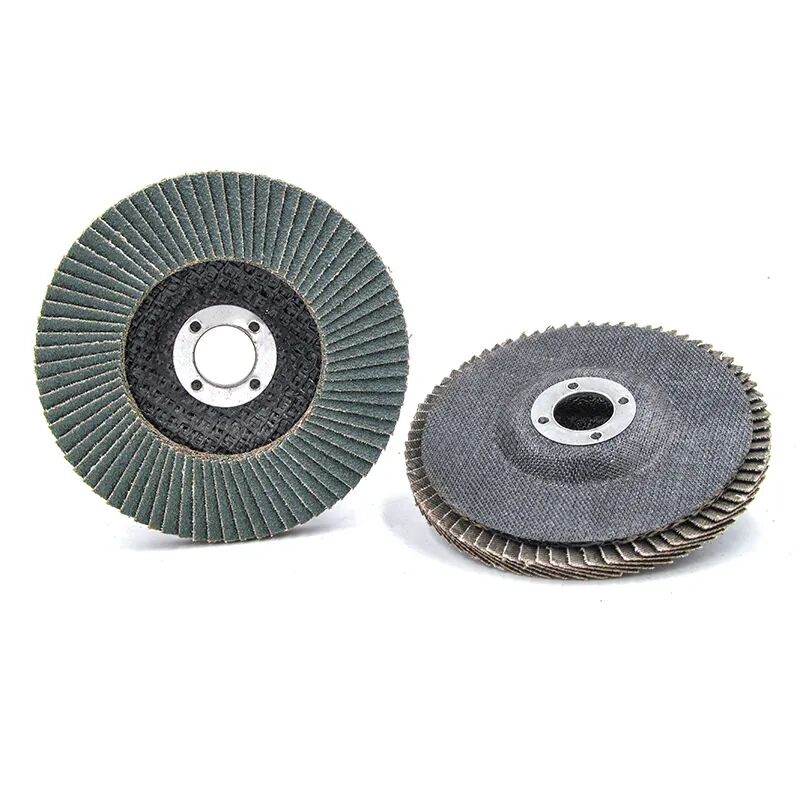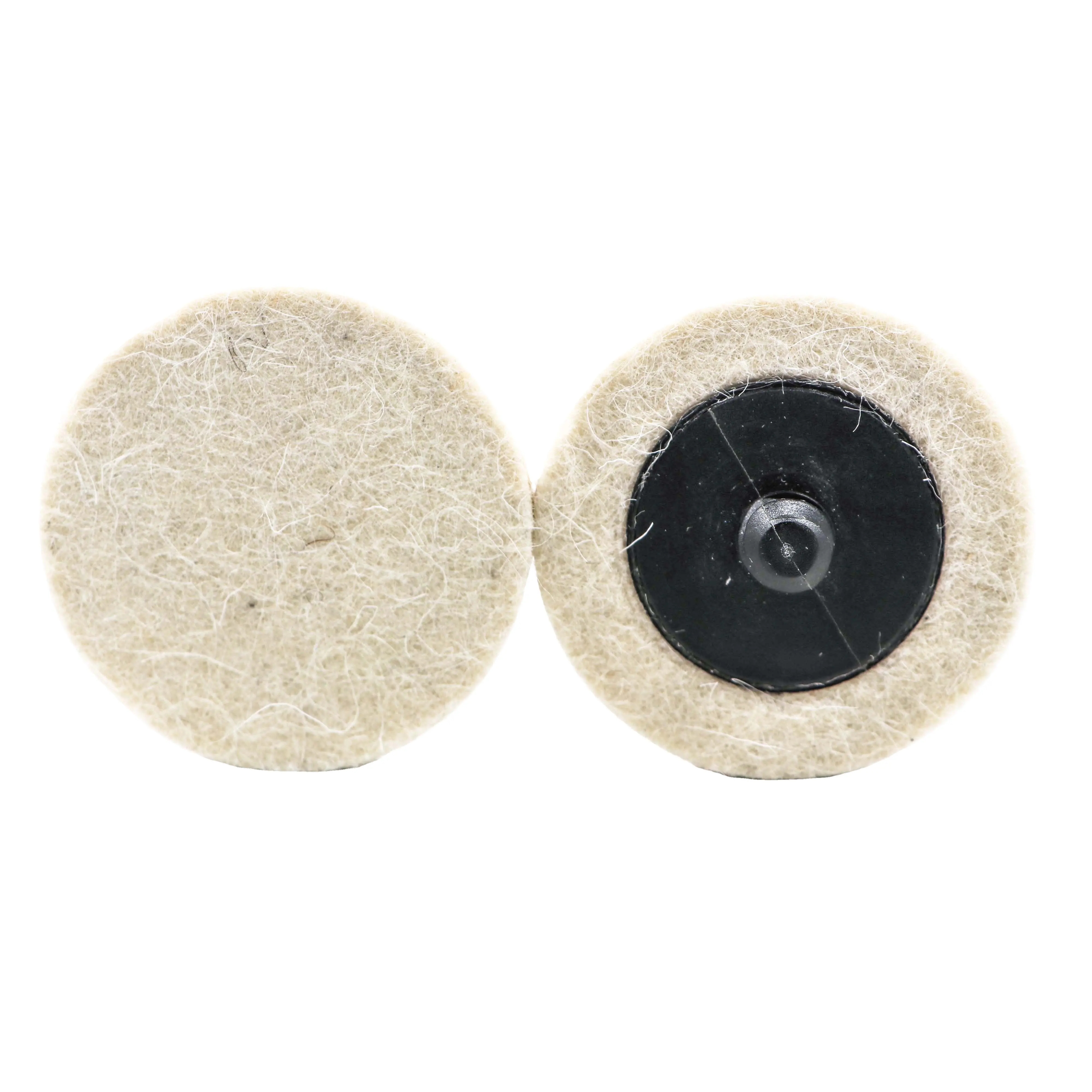- Overview
- Related Products
- Abrasive: Alumina is used as the abrasive. Alumina has high hardness (Mohs hardness 9), good wear resistance, chemical stability, and thermal stability, which enables it to quickly and effectively grind and process various materials such as metals and woods.
- Backing Base: It usually consists of materials like cloth base and paper base. The cloth base has high strength and good toughness, making it suitable for heavy-duty grinding and rough machining. The paper base is relatively soft and flexible, which is suitable for fine machining and curved surface grinding.
- Adhesive: Generally, resin adhesive is used to firmly bond the alumina abrasive to the backing base. This adhesive has strong high-temperature resistance and wear resistance, ensuring that the abrasive grains do not easily fall off during the use of the abrasive belt.
- Holes: The holes on the abrasive belt are mainly used for heat dissipation and chip removal. During the grinding process, they can effectively reduce the temperature of the abrasive belt and the workpiece, preventing problems such as workpiece deformation and accelerated wear of the abrasive belt due to overheating. At the same time, they help to promptly discharge the grinding debris, avoid the blockage of the abrasive belt by the debris, and improve the grinding efficiency and quality.
- Size: Common widths of the abrasive belt include 2 inches, 50 millimeters, etc., and lengths include 132 inches, 1570 millimeters, etc. In addition, there are various other specifications to meet different equipment and processing requirements.
- Grit: It includes a variety of options such as P40, P60, P80, P100, P120, P180, P240, P320, P400, P600, P800, etc. The smaller the grit number, the coarser the abrasive grains, and the stronger the grinding force, which is suitable for rough machining to remove a large amount of material. The larger the grit number, the finer the abrasive grains, and the higher the surface finish after processing, which is used for fine grinding and polishing.
- High Grinding Efficiency: The high hardness and sharpness of the alumina abrasive enable the abrasive belt to cut materials quickly, improving the processing efficiency. The perforated design helps with chip removal and heat dissipation, maintaining the grinding performance of the abrasive belt and further enhancing the efficiency.
- Good Wear Resistance: The alumina abrasive itself has strong wear resistance. Coupled with high-quality adhesive and backing base materials, the abrasive belt is not easily worn during long-term use, has a long service life, and reduces the usage cost.
- Good Processing Quality: The abrasive grains of the abrasive belt are evenly distributed, and during grinding, it can ensure the flatness and surface finish of the workpiece. At the same time, the perforated design can reduce vibrations and scratches during the grinding process, improving the processing quality.
- Wide Application Range: It can be used in metal processing, such as the grinding, polishing, and deburring of steel, stainless steel, non-ferrous metals, etc.; it is also suitable for wood processing, such as the sanding of wooden boards and the grinding of wooden products; it can also be applied to the surface treatment of other materials such as plastics and rubbers.
- Metal Processing Industry: It is used for the rough grinding, fine grinding, and polishing of metal parts, removing surface oxide scales, burrs, weld seams, etc., and improving the surface finish and precision of metals, such as the processing of automotive parts, mechanical accessories, and hardware products.
- Wood Processing Industry: It sands and grinds wood to make the wood surface smooth and flat, facilitating subsequent processes such as painting and waxing, and improving the quality and appearance of wood products, such as furniture manufacturing and wooden floor production.
- Other Industries: In the processing of materials such as plastics, rubbers, and leathers, it is used for surface trimming and grinding to improve the surface quality. In the field of architectural decoration, it can be used for the leveling treatment of walls and floors.
- Hanging of the Abrasive Belt: Before use, the abrasive belt should be hung for at least 2 to 5 days to eliminate the curling caused by packaging. When hanging, pay attention to ensure that the ambient temperature and humidity meet the storage conditions of the abrasive belt.
- Appearance Inspection: After hanging, the abrasive belt should be subject to a necessary appearance quality inspection before use. Check whether the joint of the abrasive belt is flat and firm; whether there are holes, abrasive clusters, lack of abrasives, adhesive spots, and wrinkles on the surface of the abrasive belt; and whether the edge of the abrasive belt is neat and there are no cracks.
- Proper Installation: When installing the abrasive belt, ensure that the abrasive belt closely fits the contact wheel and tensioning wheel of the abrasive belt machine, and there should be no looseness or deviation. At the same time, pay attention that the direction of the abrasive belt should not be installed reversely.
- Reasonable Use: According to the material, hardness, and processing requirements of the workpiece, select an abrasive belt with an appropriate grit, and adjust the rotation speed and pressure of the abrasive belt machine properly to avoid excessive grinding and overloading of the abrasive belt.



